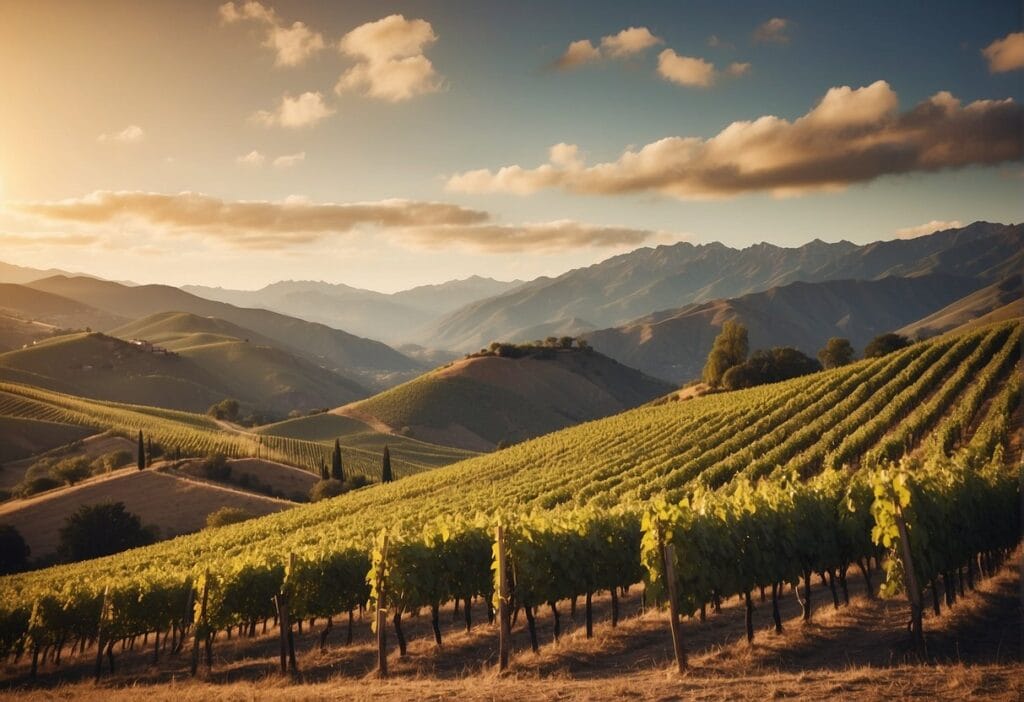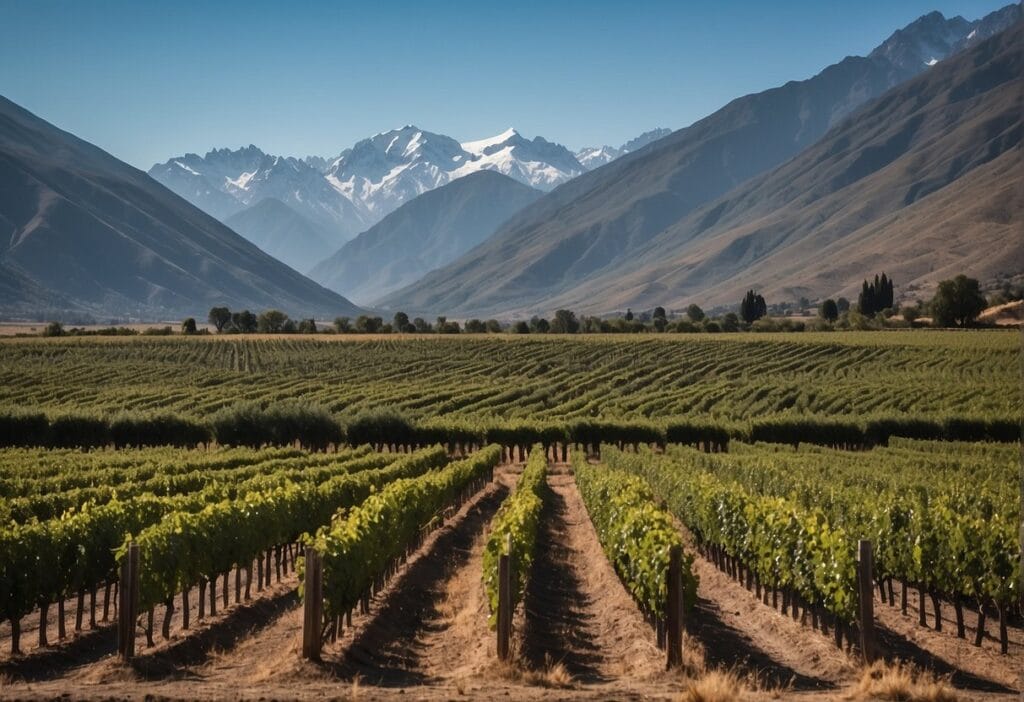Nestled in the southern reaches of Chile, the Bío-Bío wine region emerges as a prominent name in the world of viticulture. Renowned for its exceptional cool-climate wines, Bío-Bío Valley’s geographic location and climate contribute significantly to its wine profile. Its position, over 400 kilometers south of Santiago, gives it a cooler and more humid climate than Chile’s more northern wine regions, which in turn affects the grape varietals that can thrive there.
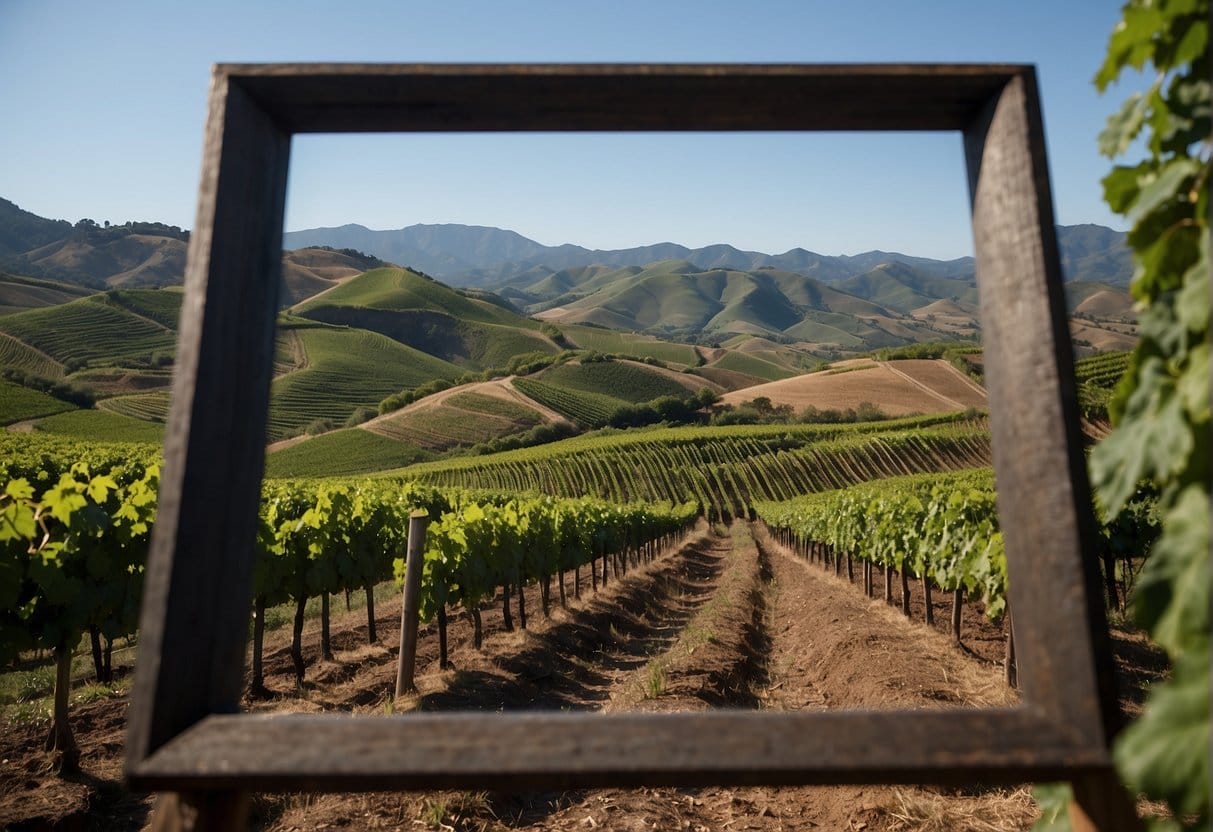
In the Bío-Bío wine region, winemaking has seen significant evolution. Driven by a surge in demand for diverse and high-quality wines, wineries in this area have adopted both traditional and innovative practices to create distinctive flavors.
The valley is particularly acclaimed for its aromatic white wines and increasingly for its red varieties, which reflect the unique terroir of the region. The commitment to quality and the adaptation to an often challenging climate showcase the resilience and innovation of local winemakers.
Key Takeaways
- The Bío-Bío wine region is notable for its cool-climate wines.
- Winemaking in the region blends tradition with innovation.
- Bío-Bío’s terroir is uniquely expressed through its aromatic wines.
Geography and Climate
Encounter the unique geographical diversity and climatic conditions that shape the wines of Bío-Bío. This area in Chile is renowned for its distinctive viticulture influenced by its southern locale.
Viticultural Areas
- Itata Valley: Nestled to the north of Bío-Bío, this valley enjoys a picturesque setting and a winegrowing heritage that dates back centuries.
- Malleco: Positioned even further south, Malleco is the lesser-known frontier of Chilean viticulture, boasting cool-climate conditions that can produce some compelling wines.
Climate Influences
Bío-Bío is characterized by its:
- Cool Climate: Your wine profiles are shaped significantly by the cooler temperatures compared to the Maule Valley and Casablanca Valley in the center of the country.
- Proximity to the Ocean: Gentle breezes from the Pacific influence the maturation of grapes, imparting a fresh minerality to the wines.
- Rainfall: With more precipitation than northern regions, vineyards here may challenge vintners, but also create opportunities for unique expressions of terroir.
Remember, the Bío-Bío Valley, while less famous than its central peers, contributes significantly to the mosaic of Chilean wine with its aromatic wine profiles, thanks to its southern position close to Concepción.
History and Development
Bío Bío Valley is your gateway to exploring a unique segment of Chilean Wine history. Situated in the southern reaches of Chile, this wine region enjoys a cooler climate influenced by its proximity to the Pacific Ocean. Your journey through the vintages of Bío Bío introduces you to a refreshing diversity of wines which challenge the typical expectations from traditional wine regions like France or Spain.
Initially, the valley was home to traditional grape varieties like Moscatel de Alejandria and Pais, which forged the basis of local winemaking. These grape types were prolific during the 20th century, symbolizing the rustic origins from which the region’s viticulture expanded.
Fast forward to today, and you’ll notice a hint of German and northern French influence, with a growing focus on aromatic varieties. This evolution marks a distinctive blend between old practices and the introduction of new, flavor-enhancing techniques.
- Past: Pais and Moscatel de Alejandria dominant
- Present: Aromatic varieties emerging
Unlike the more globally recognized Argentine wine regions that often vie for your attention, Bío Bío’s development narrates a tale of underdog resilience and adaptability. Winemakers in the valley have embraced the challenges of their environment, producing aromatic wines that mirror the enduring spirit of the area’s history.
- Difference: Less famed than Argentina, yet uniquely resilient
While the valley may not mirror the grandeur of European vineyards, it represents the spirit of Chilean winemaking — persistent, adaptable, and ready to surprise you with a glass of its finest creation. So when you sip on a Bío Bío Valley wine, you’re not just tasting a beverage; you’re immersing yourself in the rich tapestry of Chile’s wine odyssey.
Grape Varieties and Wine Production

Exploring the Bío-Bío wine region, you’ll discover a rich palette of grape varieties. The wines crafted here are distinct, with each variety contributing its own flavor profile and aroma.
Red Wine Varieties
In the Bío-Bío Valley, red grape varieties stand out with their complexity. You’ll find:
- Pinot Noir: Producing elegant wines with subtle red fruit flavors and earthy undertones.
- Pais: Also known as Mission, this grape has historical significance and creates rustic wines with a unique personality.
- Cabernet Sauvignon, Merlot, Malbec, Syrah, Carignan: These have been planted more recently, adding depth and variety to the region’s red wine portfolio.
White Wine Varieties
The Bío-Bío’s cooler climate is ideal for creating aromatic white wines. Varieties you’ll encounter include:
- Chardonnay: Known for its versatility, yielding wines that can range from crisp and refreshing to rich and creamy.
- Sauvignon Blanc: Noted for its sharp acidity and grassy, citrus notes.
- Riesling: This variety thrives here, producing wines that balance sweetness with a bright acidity.
- Moscatel de Alejandria: While more rustic, it’s been a mainstay in the area, known for its sweet floral aromas.
Wine Tasting and Profiles
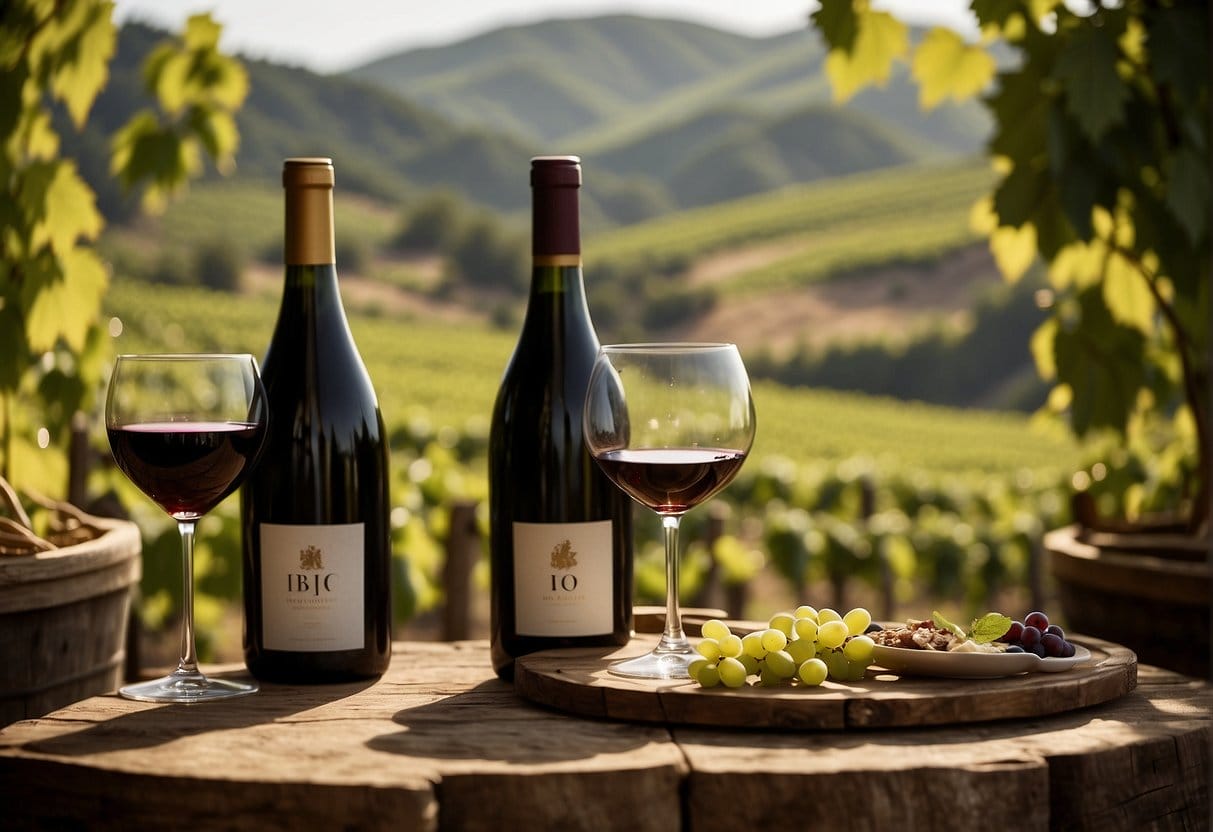
Embarking on a wine tasting journey through the Bío Bío Valley, you’ll discover a range of flavor profiles that reflect the region’s unique terroir. From crisp to complex, the wines here are as inviting as the valley itself.
Flavor Profiles
When sampling the wines from the Bío Bío Valley, expect a vibrant tapestry of flavors that captures the essence of this southern Chilean wine region.
- Taste: The cool climate contributes to a high level of acidity in the wines, often lending a refreshing zestiness to each sip. You’re likely to find white wines with crisp apple and pear notes, while the reds can surprise you with a bright cherry and blackcurrant presence.
- Spices: Reds from this area may have subtle hints of spice, such as black pepper or clove, adding complexity and depth to the flavor profile.
- Mineral: The valley’s volcanic soils impart a distinct mineral quality to the wines, which can range from a gentle stoniness to a pronounced flinty character, enhancing their overall sophistication.
When considering wine scores, it’s common to come across Bío Bío Valley selections labeled as very good to excellent by Wine Enthusiast and other wine authorities. Whether you’re seeking a wine with good everyday drinkability or an excellent pick for a special occasion, this region’s offerings consistently deliver quality.
During a wine tasting in Bío Bío, your palate will be greeted with wines that boast balance, elegance, and expressive fruit characteristics. It’s a chance to experience how the extreme conditions and a changing climate influence the vines and the resulting wines.
Terroir and Viticulture

When you explore the Bío-Bío wine region of Chile, you’re immersed in a unique terroir that shapes the character of its wines. Situated at a southern latitude similar to the renowned Burgundy and Loire Valley regions in France, Bío-Bío presents a cool climate with abundant rainfall. This climate, combined with the valley’s diverse soils, cultivates vineyards that produce grapes with a distinct profile.
Notably in the Bío-Bío region, the towns of Antuco and Yumbel are recognized for their volcanic soils, which contribute to the minerality and the vibrant acidity of the local wines. The Laja area is well-known for its alluvial soils, reflecting the influence of the Laja River, while connoisseurs find that Ñuble’s soils add complexity to the wines.
The Terroir in Bío-Bío is remarkable, where the ocean’s proximity tempers the summer heat, allowing you a longer growing season to let your grapes develop full flavors.
- Soil Types: The region boasts a mix of sand, clay, and volcanic ash.
- Latitude: The region lies around 36°–38°S.
- Climate: Predominantly cool, with a significant influence from the Pacific Ocean.
Now, when you think of viticulture in Bío-Bío, imagine diligent farmers working the land, adopting sustainable practices that honor centuries of winemaking tradition. With the soils offering excellent drainage and low fertility, wines from Bío-Bío exhibit a naturally high acidity and aromatic intensity – characteristics that savvy wine lovers like you cherish.
Remember, it’s the harmony of soil, climate, and latitude that paints the full picture of the Bío-Bío wine region’s terroir, making the wines you savor truly expressive of this beautiful part of Chile.
Wineries and Winemaking

Exploring the Bío-Bío region, you’ll discover a blend of traditional winemaking techniques and modern innovation. The wineries here are renowned for their dedication to quality and unique expression of the terroir.
Prominent Wineries
Concha y Toro: As one of the most recognized names in the Chilean wine industry, Concha y Toro sets the standard with its premium wine production. You’ll find that this producer has a significant influence in the Bío-Bío region, known for creating wines with remarkable character.
Veramonte: Another highlight in the Bío-Bío region is Veramonte. Their commitment to sustainability and organic viticulture positions them as a leading winery, where you can taste wines that truly encapsulate the essence of the valley.
Santa Rita: This winery stands out for its historical significance and the way it weaves the story of the region into every bottle. Santa Rita is a must-visit destination for you if you’re interested in how the past and present come together in winemaking.
Winemaking Techniques
In Bío-Bío, winemakers are your artisans, skillfully blending time-honored methods with innovative practices to create exceptional wines. Here’s a glimpse into the techniques that make this region stand out:
- Cool Climate Viticulture: The cool climate of the Bío-Bío Valley encourages a slower, more even ripening of grapes, giving winemakers the advantage of producing wines with balanced acidity and intense aromatics.
- Sustainable Practices: You’ll often find that wineries emphasize sustainability and organic farming, ensuring that the winemaking process respects and preserves the natural environment.
By visiting Bío-Bío, you’ll not only experience the lush landscapes and welcoming winemakers but also gain an insight into the meticulous craft of turning grapes into the exceptional wines that define the region.
Wine Industry and Market

The Bío-Bío Valley is a distinct mark in Chile’s rich tapestry of wine regions. Here, you’ll explore how this southern territory fits into the broader Chilean wine narrative.
Domestic and International Presence
At the heart of Chile, the vibrant city of Santiago serves as an important hub for the country’s flourishing wine industry. Although the Bío-Bío Valley sits about 435km south of Santiago, its wines travel extensive distances to reach international markets. This region, along with others like the esteemed Maipo Valley, Casablanca Valley, and the warmer Aconcagua Valley, contributes to Chile’s reputation as a world-class wine-producing nation.
Chilean wine regions have made a considerable impact both locally and abroad. The Elqui and San Antonio Valleys, with their coastal influence, and central regions such as Colchagua, Cachapoal, and Talca are recognized for their wine quality. In Bío-Bío, you’ll find the presence of lesser-known yet equally charming varietals that reflect the area’s unique terroir.
What sets Bío-Bío apart is its cool climate, which produces aromatic wines that stand out among others from Chile’s more established regions. Bío-Bío’s increasing fame is linked to these fresh flavors that have been exported successfully, capturing the palates of international consumers.
In comparison, regions like Atacama and Maipo Valley are acknowledged for their different wine profiles, highlighting the diversity within Chile’s wine-producing regions. Bío-Bío’s ability to maintain a strong domestic and international presence attests to the dynamic nature and adaptability of Chile’s wine market.
Cultural Significance

As you explore the Bío-Bío wine region, you’ll find that wine is not just a beverage, but a vital part of Chilean culture. It reflects a rich heritage and is deeply entwined with the nation’s identity.
Wine in Chilean Culture
Wine has been a cornerstone of Chilean culture for centuries, often symbolizing both tradition and innovation. In family gatherings or national celebrations, a bottle of wine is frequently at the center of the table. Sharing a glass of Chilean wine is considered a gesture of friendship and hospitality.
It’s common to see a variety of wines being served at social events, with Pisco, a grape brandy produced in Chile, holding its ground as the country’s classic spirit. While Pisco has its own traditional standing, the evolution of Chilean wine and its recognition as a classic itself has been remarkable.
Wine tasting and vineyard tours, like those in the Bío-Bío Valley, are not merely tourist activities; they’re an expression of cultural pride and a way to experience the rich tapestry of Chile’s history and its future.
Tourism and Hospitality
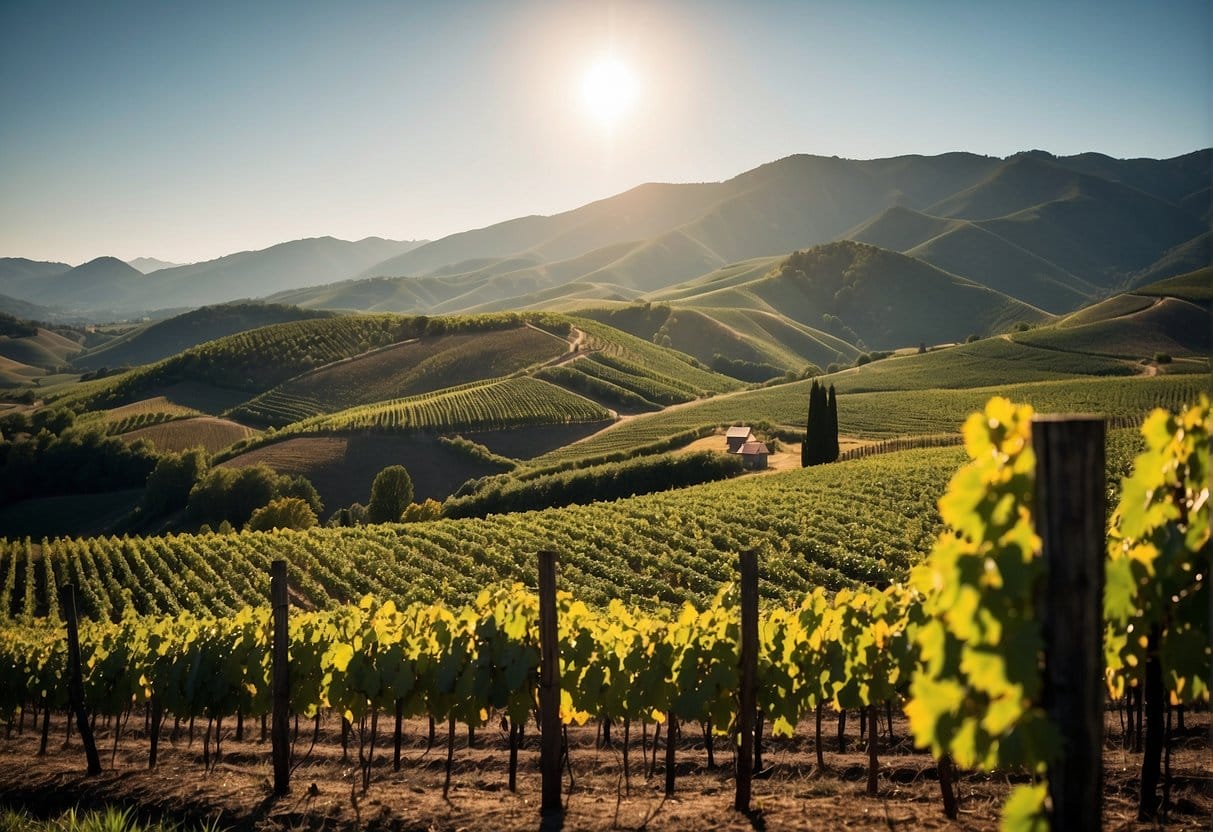
In the southern reaches of Chile, the Bío-Bío wine region welcomes you with its aromatic wines and a landscape dotted with vineyards. Less than a day’s drive from Santiago to the heart of these vibrant vineyards, you’ll discover a place where the warmth of the locals is as memorable as the crisp wines.
Wine Tourism
Bío-Bío Valley offers a unique experience for wine enthusiasts. Your journey starts with a scenic 435km drive from Santiago to the wine heartland, passing by Concepción, a major coastal city offering hospitality options for every taste. Explore small, family-owned vineyards where traditional methods meet modern craftsmanship, revealing the true essence of Chilean winemaking.
The region is characterized by its cool climate, which plays a pivotal role in cultivating the distinct flavors of the wines produced here. You can find yourself sampling elegant Pinot Noir or aromatic Chardonnay, amidst the backdrop of the valley’s verdant landscapes.
As you visit, learn how Bío-Bío contrasts with better-known areas like Monterey, with its own unique wine varieties and processing techniques. Tour the vineyards, engage with knowledgeable vintners, and unwind in quaint, rustic establishments that often offer more than just a tasting session but a full immersion into Chilean wine culture.
Environmental Considerations

When exploring the Bío-Bío wine region, you’ll quickly notice its commitment to fostering a sustainable relationship with the environment. This care is visible in viticulture practices that respect the unique climate, soil, and overall terroir.
Sustainable Viticulture
Engaging in sustainable viticulture means understanding that the Bío-Bío Valley’s wine quality stems from its distinct environmental conditions. Your journey through this region will show you how winemakers adopt methods sensitive to the natural order.
- Climate: The Bío-Bío region boasts a cooler climate, which is ideal for producing aromatic wines. You can find wines that are expressive of their origin because of the climatic challenges here, such as more wind and varying temperatures.
- Soil: The soils in this region are notably diverse. You’re looking at a combination of volcanic and alluvial soils, which contribute to the minerality and complexity of the wine.
- Terroir: The confluence of climate and soil forms a unique terroir recognized for its ability to yield wines with pronounced acidity and freshness. Winemakers in the Bío-Bío Valley are deeply aware of this and strategically choose grape varieties that thrive under these conditions.
Your appreciation for Bío-Bío wines will deepen as you learn how each bottle carries the essence of its environmental heritage, a testament to the winemakers’ dedication to sustainability and environmental practices.
Frequently Asked Questions
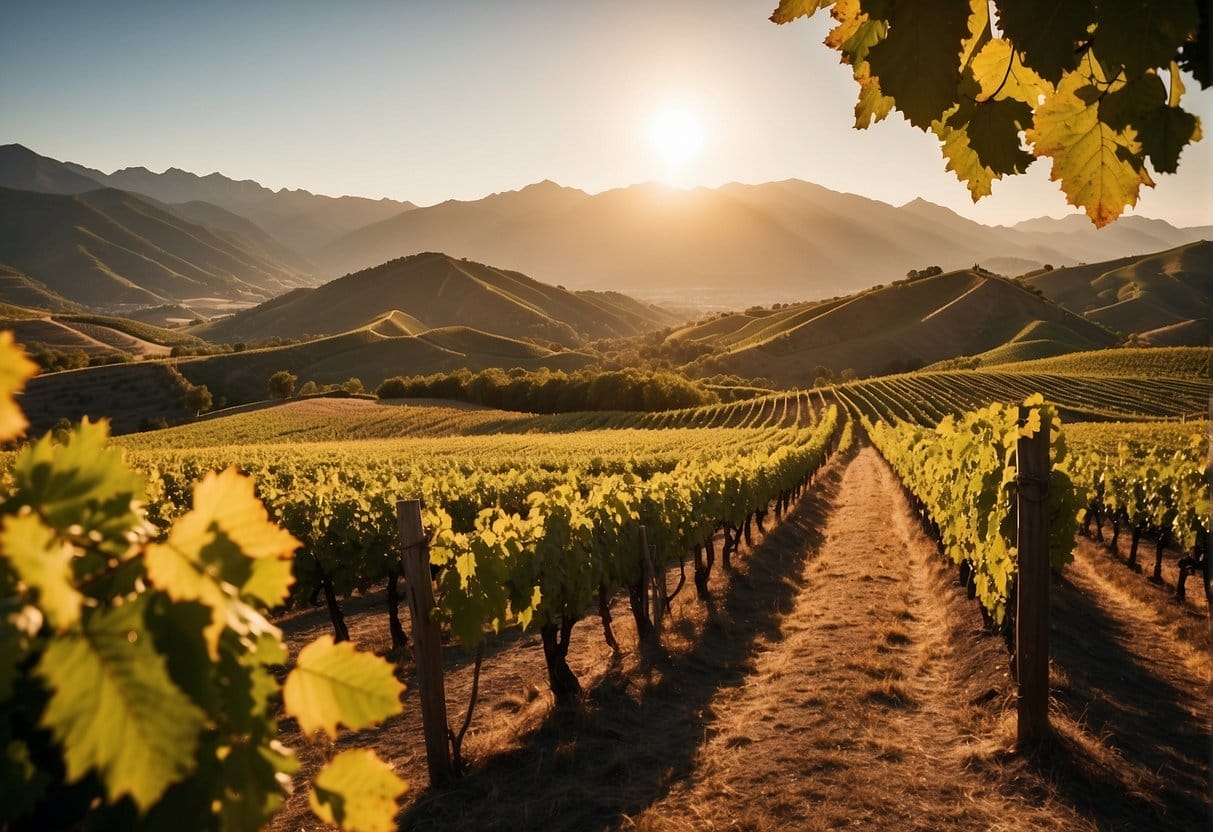
Before diving into the specifics of the Bío-Bío wine region, here are some direct answers to common queries to help you get a quick understanding of this unique wine-producing area.
What types of wine are most prominent in the Bío-Bío wine region?
In the Bío-Bío wine region, you’ll find that aromatic wines such as Riesling and Gewürztraminer stand out due to the cool climate. Pinot Noir also thrives here, producing elegant and complex wines.
How can one plan a tour to visit the vineyards in the Bío-Bío region?
To plan a vineyard tour in Bío-Bío, start by researching online for local wineries offering tours. Wine Tourism is an excellent platform where you can find and book various experiences.
Can you compare the Bío-Bío wine region to other wine regions in Chile?
Compared to more northern regions like Maipo or Colchagua Valley, Bío-Bío boasts a cooler climate, which influences the creation of crisp, aromatic wines. Its location further south makes it unique in the diversity of grapes that prosper.
What are some highlights and attractions of the Bío-Bío wine region for visitors?
Visitors to Bío-Bío can explore not just wineries but also the area’s natural beauty, including lush forests and scenic rivers. Wine enthusiasts appreciate the engaging wine-tasting experiences as well as the local hospitality.
How did the Bío-Bío region recover and evolve after the earthquake in terms of wine production?
After the 2010 earthquake, Bío-Bío’s wine industry focused on modernization and resilience. Winemakers invested in state-of-the-art facilities and sustainable practices, which allowed for a stronger, more innovative wine production.
What attributes distinguish the climate and terroir of the Bío-Bío valley for wine cultivation?
The Bío-Bío valley’s cool climate and varied terrain—comprising river valleys and coastal influences—create a distinct terroir. This results in a longer ripening period for grapes, yielding wines with pronounced acidity and complex flavors.
